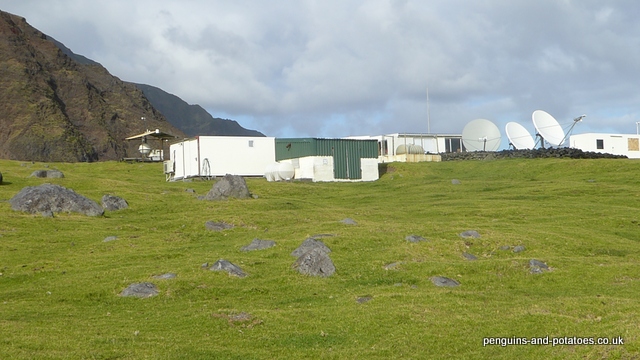Tristan da Cunha can not in any way claim to be particularly high tech. In a practical sense, levels of both mechanisation and automation are well behind most other countries. There is no system for the use of credit cards, and there is no mobile phone system. Government and Departmental accounts have only just been digitalised, and the internet is not at all reliable, to say the least.
Yet, the island is home to some of the most high-tech installations imaginable.
The UN organisation CTBTO has a monitoring station on Tristan. The Comprehensive (Nuclear) Test Ban Treaty Organisation was formed in 1996. Over 180 countries have signed up to the Treaty. In the original documentation there were 44 countries listed as being countries with nuclear capability, and signatures from all of these were needed before the Treaty could become Law. It is noteworthy that 8 of these countries have yet to sign (China, Egypt, India, Iran, Pakistan, Israel, N. Korea and the U.S.A.)
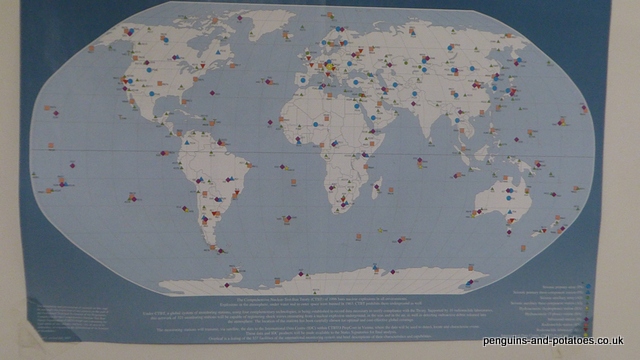
The history of nuclear testing goes back to 1945, when the U.S.A. tested a device in New Mexico. Between then and 1996, over 2,000 tests were carried out worldwide. Of these, 1,032 were carried out by the U.S.A., 715 by the Soviet Union, and 210 by France. Between 1945 and 1980, nuclear tests have totalled 510 Mt (mega-tons), of which the atmospheric tests totalled 428 Mt – equivalent to 29,000 Hiroshimas.
Since 1996, there have been just 10 nuclear tests. India and Pakistan each carried out 2 tests during a period of sabre-rattling in 1998, and North Korea has been responsible for 6 tests. All of these tests were detected by the CTBTO.
This is the background to the CTBTO. The monitoring station on Tristan is one of about 250 around the world, with around 320 eventually planned. Clearly, the island is wonderfully well placed to host a monitoring station, in that any signals that are detected can be accurately triangulated with other monitoring stations in countries on either side of the Atlantic Ocean – and there are no land areas anywhere near that could provide the same service!
Each CTBTO monitoring station measures, with extreme accuracy, a number of parameters that are able to detect and record that a nuclear explosion has taken place. The wealth of information that is generated is transmitted in real-time to the IDC – International Data Centre – in Vienna, where the central computer system can immediately identify that a nuclear explosion has taken place, and exactly the location of the explosion.
On Tristan, as is the case with all the other CTBTO monitoring stations, three distinct physical parameters are monitored.
- A network of sensors monitors infrasound waves, using micro barometers which are able to detect minute infrasound pressure waves.
- Air quality is monitored, the sampling being aimed at detecting evidence of nuclear activity as well as being able to determine the type of nuclear device.
- Seismic movement is detected by a group of 3-axis seismometers – information from these instruments could also be useful in giving advance warning of active volcanic activity on the island.
The first category of sensors takes place on the Western Plain, beyond the Potato Patches. There are five separate sensing units, each having four sensing hub. Each hub has around 24 tubes radiating from it, like spokes of a wheel. The purpose of this arrangement is to average out all variations in infrasound waves, to arrive at a true reading. Computer triangulation of the signals received by the five sensing units determines also the direction of the nuclear explosion. Readings are sent by a microwave system to the station’s central computer, where they are computed and sent continuously via satellite link to Vienna. One of the five sensing units also has a chamber in which, as well as the electronic package that looks after the infrasound information, there is a seismometer, ready to sense and calculate any tremor in the earth’s surface at that point. As part of the fail-safe technology that is part of the station, whenever the cover is opened on the chamber notification is instantly sent to Vienna.
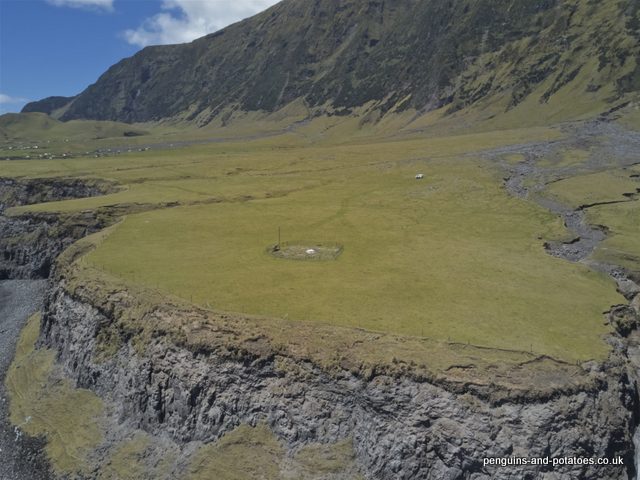
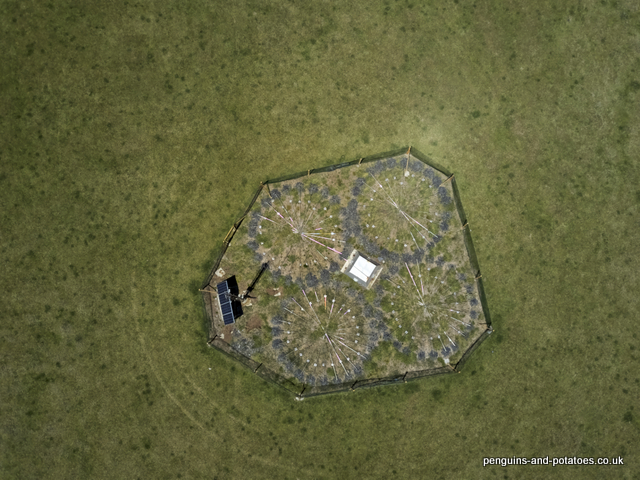
The remaining elements of the CTBTO station are all to be found in a cluster in the field immediately to the west of the Settlement. For determining air quality, there are two distinct systems used. The first machine is called Snow White, which is manufactured in Finland. This unit samples 20,000 cubic metres of air each day, collecting all particles in the air onto a filter pad, which is then removed and compressed into a wafer by processing it in a hydraulic press at 400 bar pressure. After 24 hours, the wafers are placed in a spectrometer, which is able to identify around 12 substances that are known to be produced by nuclear explosions. The technology that is required in this process is impressive, and it requires temperatures below -220 Centigrade, and electrical voltages of over 2,000V. The second system is made in Sweden and is called Sauna. This unit samples the noble gas xenon, and identifies the isotopes of that gas. In the event of a nuclear explosion, the ratio between the four isotopes will determine what sort of bomb is being detected.
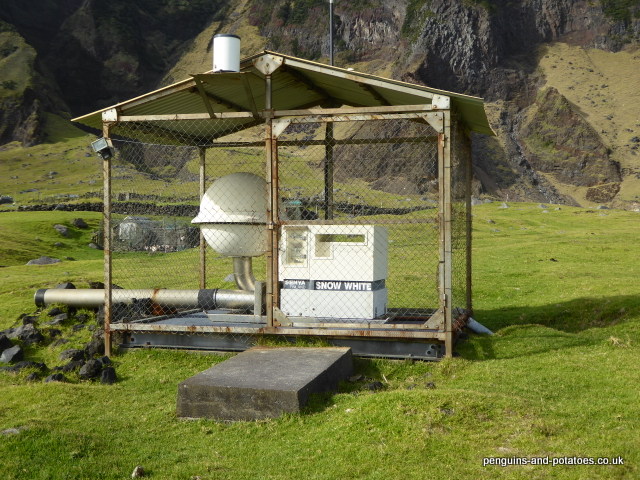
Seismometers are also located in chambers nearby.
The CTBTO station is managed by a French company, with a French station manager on the island. For the last two years, Leo Duval was on Tristan. We have just had a handover to the new station manager Maxim Sanders, with Maxim Le Maillot actually doing the handover. Maxim Le Maillot was Leo’s predecessor, so he knew well the island and the installation. Each of these station managers are known on the island as “Frenchie”, which is a simple system for most of the year but which can cause a little confusion when there are two of them here!
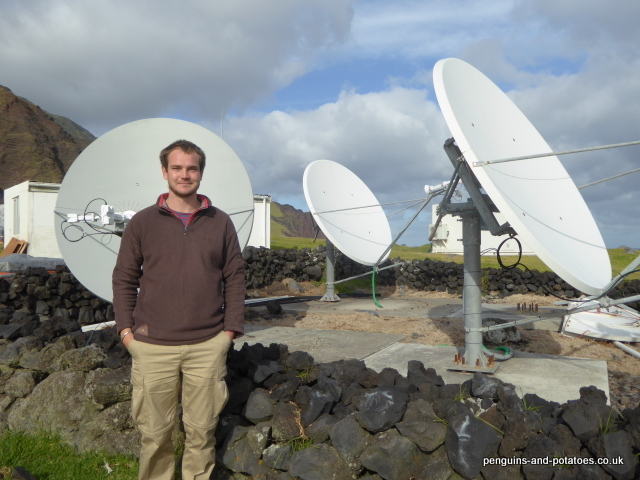

There are two other monitoring stations on the island. The first is a station that was set up in 2004 by Austrian Jurgen Matzka for the Danish Magnetic Institute. Jurgen is now with the German Research Centre for Geosciences (GFZ) who now have taken over the station. This station measures changes in the Earth’s magnetism. Generally, these changes reflect changes in the Earth’s core, but they can also react to local influences such as the construction of the new hospital, or even someone with metal buttons on his jacket walking too close to the sensing unit. The station is accurate enough to measure changes in magnetism of one thousandth of a degree, which Jurgen likens to kicking a football through a goal which is 500km distant!
Finally, in the same field there is a third monitoring station. This one is operated by the USGS (US Geological Survey) and consists of seismometers that are specifically set up to monitor volcanic activity, earthquakes and landslides. The information from these seismometers is continuously being monitored in the United States. The USGS was set up in 1879, and is set up to monitor a wide range of natural sciences around the world.
